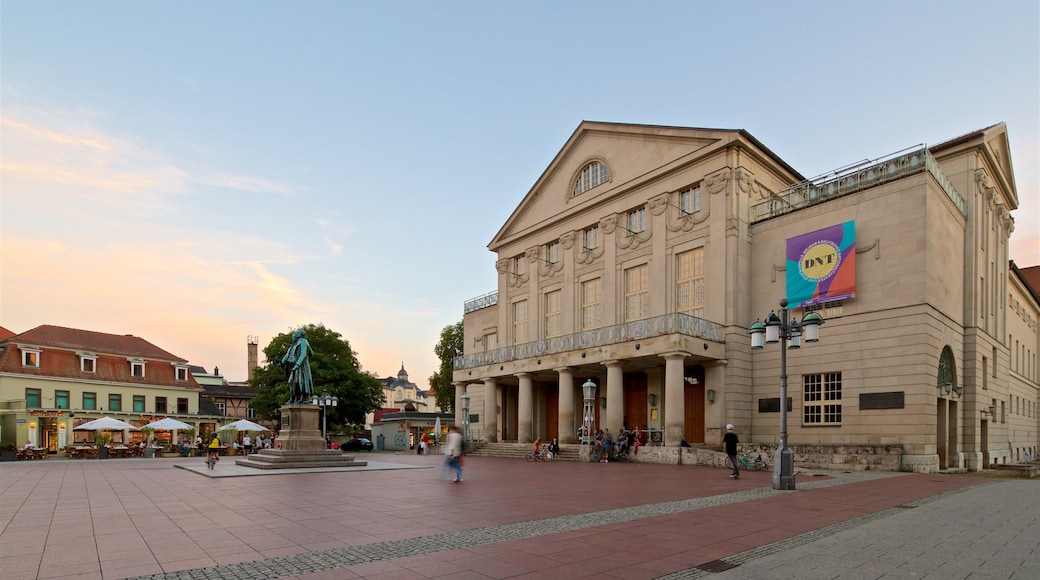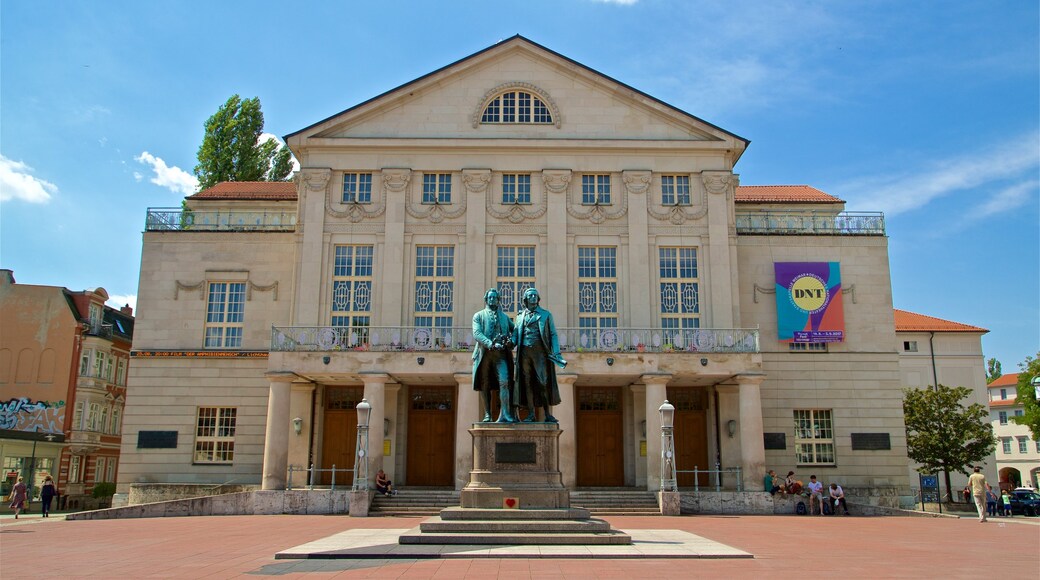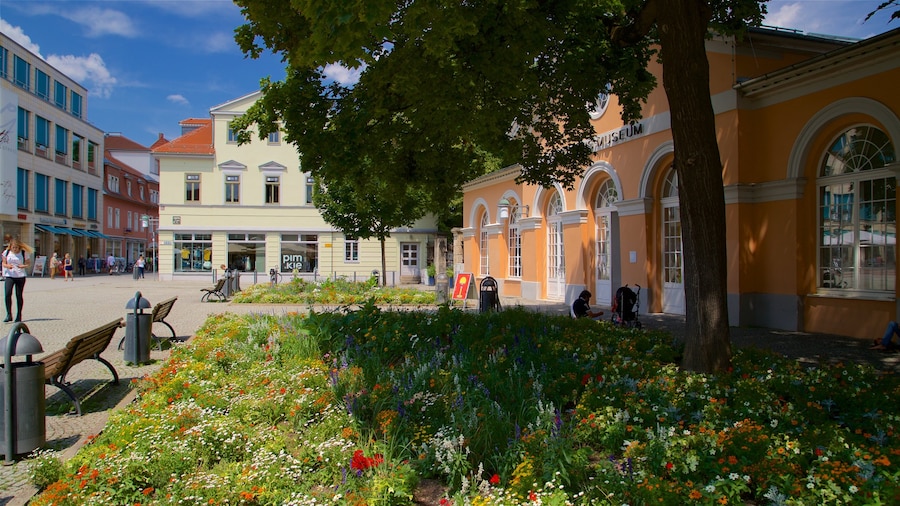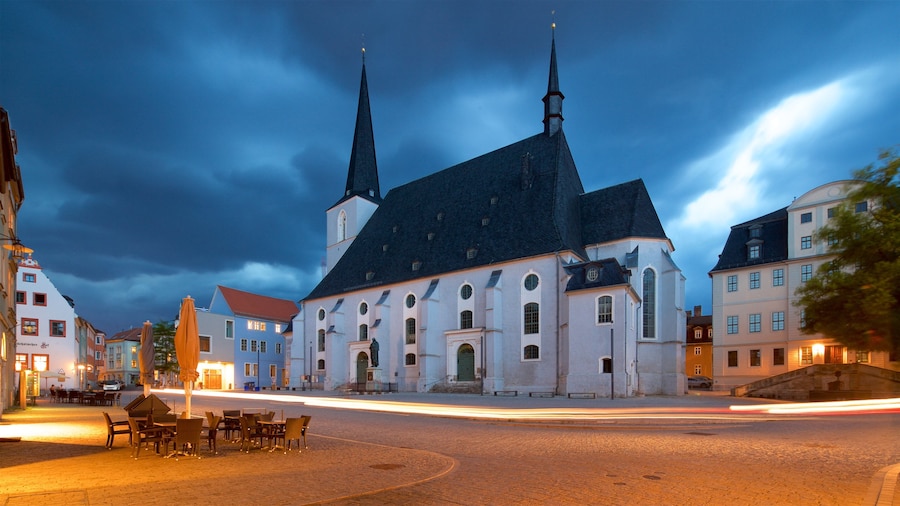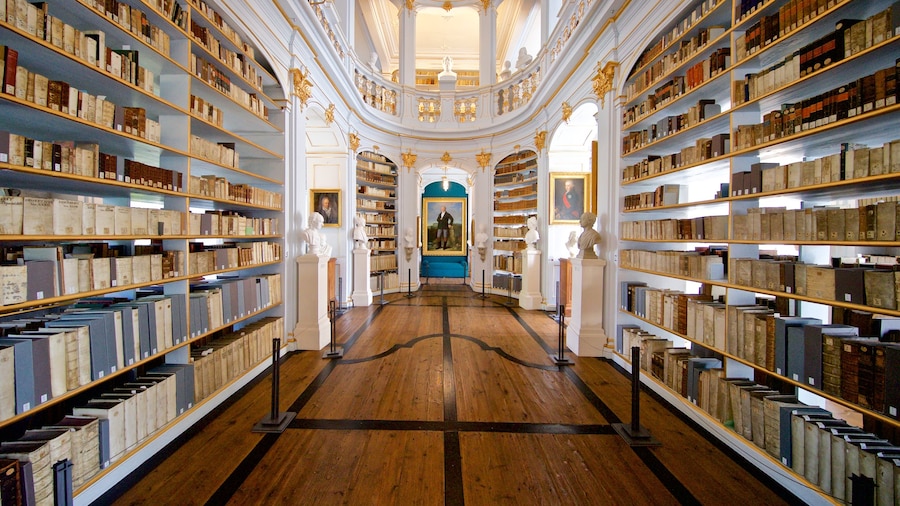An enduring symbol of the city, this bronze monument depicts two of Weimar’s most famous poets, and has spawned a series of global copycats.
Standing in a prominent position on Weimar’s central Theaterplatz, the Goethe-Schiller Monument pays homage to two of the greatest writers to ever live in the city: Johann Wolfgang Goethe and Friedrich Schiller. Pay tribute to the two literary greats, both of whom were leading figures in the Weimar Classicism movement.
Take a city tour to find out about the history of the monument. Though the idea for its construction was put forward by Grand Duke Carl Alexander shortly after Goethe’s death in 1832, the monument wasn’t inaugurated until 1857. It was designed by Ernst Rietschel and was one of the first double statues to be erected on German soil.
Stand back and survey the bronze monument, which depicts the two men, larger than life-size and identical height (though Goethe was in fact shorter in real life) in what was contemporary dress for the time. The monument was cast using materials donated from King Ludwig I of Bavaria, who had sourced the metal from captured canons.
Note the stance of the two figures, which indicates a certain level of familiarity with each other. Goethe, on the left, has a hand on Schiller’s right shoulder. Goethe’s other hand grasps a laurel wreath, which Schiller appears to be reaching for. Schiller, meanwhile, holds a scroll in his left hand, a reference to their literary ties. Schiller and Goethe were friends, and their discussions helped push forward both of their creative projects and the Weimar Classicism movement. The pair also collaborated on Xenien, a collection of satirical poems.
Read the inscription of the monument. It translates to mean “To the two poets Goethe and Schiller. The Fatherland.”
If the statue appears familiar, perhaps it’s because you’ve seen it elsewhere. Though the Weimar monument is the original, identical versions have been put up across the globe, including in San Francisco, Syracuse, Milwaukee and Shanghai.
Find the Goethe-Schiller Monument in Weimar’s old town near the Bauhaus Museum. The statue stands on a public square called the Theaterplatz and therefore, can be seen at any time of the day or night.

